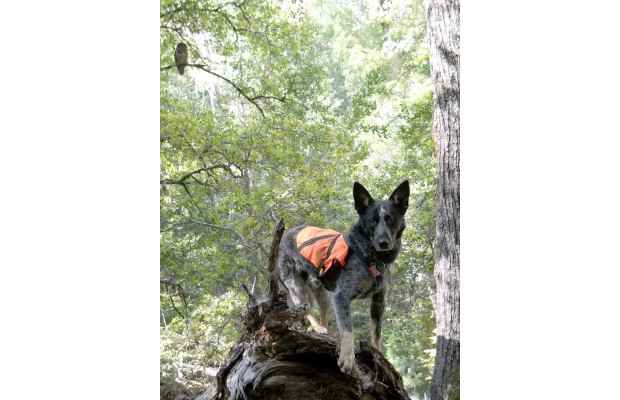Max, an Australian cattle dog mix, can sniff out owl poop and pellets.
Photograph by: Handout , University of Washington
A canine nose for poop could help protect the habitat needed for the threatened northern spotted owl.
Dogs trained to sniff out poop and pellets of regurgitated lumps of bones and fur were 30 per cent more successful in finding spotted owls than when trying to track their bird calls, says a University of Washington study, published this month in the scientific journal PLoS ONE.
Lead author Sam Wasser, director of the university's Center for Conservation Biology, said an invasion of barred owls made it difficult to identify spotted owls by their calls. "They will take over the territory and sometimes even kill the spotted owls."
That means, even when researchers offer spotted owls a mouse, they sometimes remain silent.
"They are reluctant to respond because the barred owl would come down and whack them," Wasser said.
It is important to identify spotted owl habitat in B.C. and U.S. old-growth forests because, when nests are found, stricter logging regulations are put in place.
Enter Shrek, a Labrador retriever, and Max, an Australian cattle dog - canines that are obsessive about their owl-finding work. Researchers were surprised at how successful the dogs were, especially in Canada, where there are not a lot of owls, Wasser said.
It is essential to have the right dogs, he said. "All our dogs are like narcotics dogs. They have an extremely high play drive - mainly for a ball. If you put a throwing ball next to a steak, they will take the ball rather than the steak."
The dogs came from the pound and were surrendered because they were driving their owners crazy, Wasser said. "They are maniacs when they come to us, but they quickly fall into place when they realize it's all about a ball. They are romping around in the woods and smelling poop. What could be better?"
Northern spotted owls range from B.C. to northern California. In the U.S., it is estimated there are 3,000 to 5,000 pairs and the population is dropping by four per cent a year.
In B.C., 10 spotted owls were found last year - four more than the previous year - including three breeding pairs. There are also 13 spotted owls in the captive breeding program.
Owl call searches are used in Canada, followed by daytime searches for nests.
"The methodology is not foolproof, but works pretty well," said forests ministry spokesman Brennan Clarke."Where possible, spotted owls are fitted with tracking devices and monitored electronically."
Poop-sniffing dogs is an interesting idea, he said.
"But we'll have to wait and see how it works in Washington state before deciding if it would work for us."
Read more: http://www.timescolonist.com/life/What+hoot+Pooches+sniff+poop/7144633/story.html#ixzz24cQh81Gx
